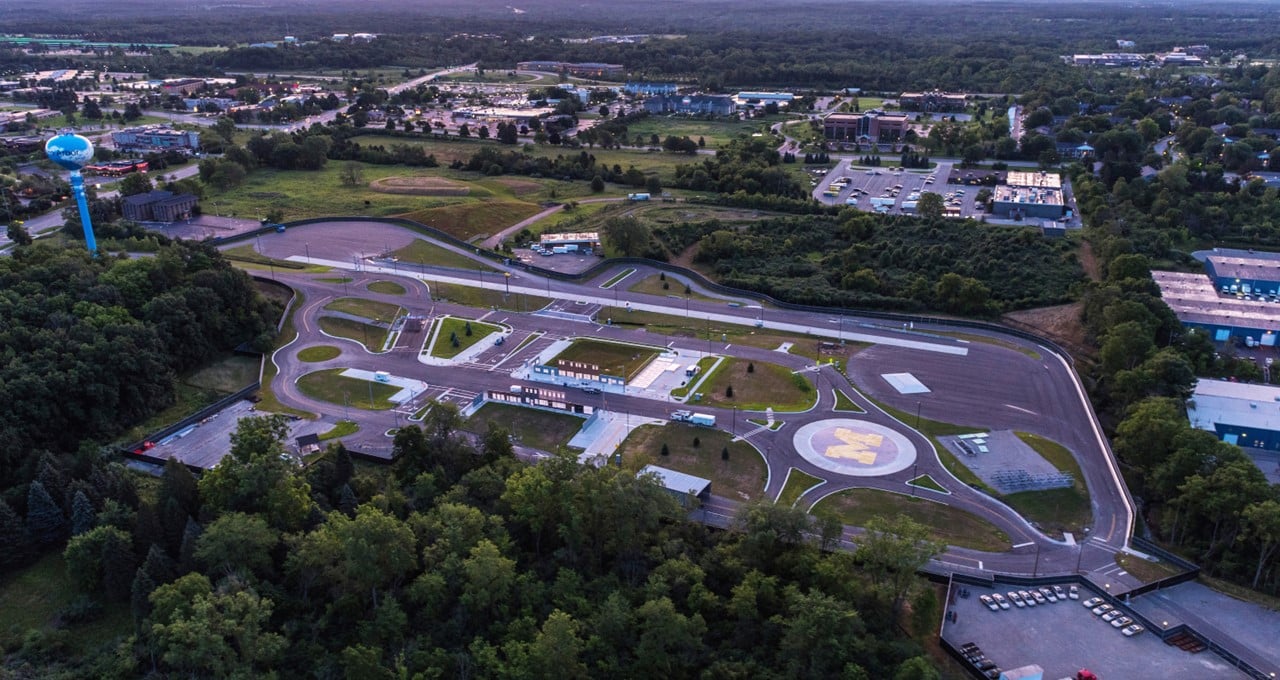The path to safe, widespread autonomous vehicles is going digital.
MITRE — a government-sponsored nonprofit research organization — today announced its partnership with Mcity at the University of Michigan to develop a virtual and physical autonomous vehicle (AV) validation platform for industry deployment.
As part of this collaboration, announced during the NVIDIA AI Summit in Washington, D.C., MITRE will use Mcity’s simulation tools and a digital twin of its Mcity Test Facility, a real-world AV test environment in its Digital Proving Ground (DPG). The joint platform will deliver physically based sensor simulation enabled by NVIDIA Omniverse Cloud Sensor RTX APIs.
By combining these simulation capabilities with the MITRE DPG reporting framework, developers will be able to perform exhaustive testing in a simulated world to safely validate AVs before real-world deployment.
The current regulatory environment for AVs is highly fragmented, posing significant challenges for widespread deployment. Today, companies navigate regulations at various levels — city, state and the federal government — without a clear path to large-scale deployment. MITRE and Mcity aim to address this ambiguity with comprehensive validation resources open to the entire industry.
Mcity currently operates a 32-acre mock city for automakers and researchers to test their technology. Mcity is also building a digital framework around its physical proving ground to provide developers with AV data and simulation tools.
Raising Safety Standards
One of the largest gaps in the regulatory framework is the absence of universally accepted safety standards that the industry and regulators can rely on.
The lack of common standards leaves regulators with limited tools to verify AV performance and safety in a repeatable manner, while companies struggle to demonstrate the maturity of their AV technology. The ability to do so is crucial in the wake of public road incidents, where AV developers need to demonstrate the reliability of their software in a way that is acceptable to both industry and regulators.
Efforts like the National Highway Traffic Safety Administration’s New Car Assessment Program (NCAP) have been instrumental in setting benchmarks for vehicle safety in traditional automotive development. However, NCAP is insufficient for AV evaluation, where measures of safety go beyond crash tests to the complexity of real-time decision-making in dynamic environments.
Additionally, traditional road testing presents inherent limitations, as it exposes vehicles to real-world conditions but lacks the scalability needed to prove safety across a wide variety of edge cases. It’s particularly difficult to test rare and dangerous scenarios on public roads without significant risk.
By providing both physical and digital resources to validate AVs, MITRE and Mcity will be able to offer a safe, universally accessible solution that addresses the complexity of verifying autonomy.
Physically Based Sensor Simulation
A core piece of this collaboration is sensor simulation, which models the physics and behavior of cameras, lidars, radars and ultrasonic sensors on a physical vehicle, as well as how these sensors interact with their surroundings.
Sensor simulation enables developers to train against and test rare and dangerous scenarios — such as extreme weather conditions, sudden pedestrian crossings or unpredictable driver behavior — safely in virtual settings.
In collaboration with regulators, AV companies can use sensor simulation to recreate a real-world event, analyze their system’s response and evaluate how their vehicle performed — accelerating the validation process.
Moreover, simulation tests are repeatable, meaning developers can track improvements or regressions in the AV stack over time. This means AV companies can provide quantitative evidence to regulators to show that their system is evolving and addressing safety concerns.
Bridging Industry and Regulators
MITRE and its ecosystem are actively developing the Digital Proving Ground platform to facilitate industry-wide standards and regulations.
The platform will be an open and accessible national resource for accelerating safe AV development and deployment, providing a trusted simulation test environment.
Mcity will contribute simulation infrastructure, a digital twin and the ability to seamlessly connect virtual and physical worlds with NVIDIA Omniverse, an open platform enabling system developers to build physical AI and robotic system simulation applications. By integrating this virtual proving ground into DPG, the collaboration will also accelerate the development and use of advanced digital engineering and simulation for AV safety assurance.
Mcity’s simulation tools will connect to Omniverse Cloud Sensor RTX APIs and render a Universal Scene Description (USD) model of Mcity’s physical proving ground. DPG will be able to access this environment, simulate the behavior of vehicles and pedestrians in a realistic test environment and use the DPG reporting framework to explain how the AV performed.
This testing will then be replicated on the physical Mcity proving ground to create a comprehensive feedback loop.
The Road Ahead
As developers, automakers and regulators continue to collaborate, the industry is moving closer to a future where AVs can operate safely and at scale. The establishment of a repeatable testbed for validating safety — across real and simulated environments — will be critical to gaining public trust and regulatory approval, bringing the promise of AVs closer to reality.
